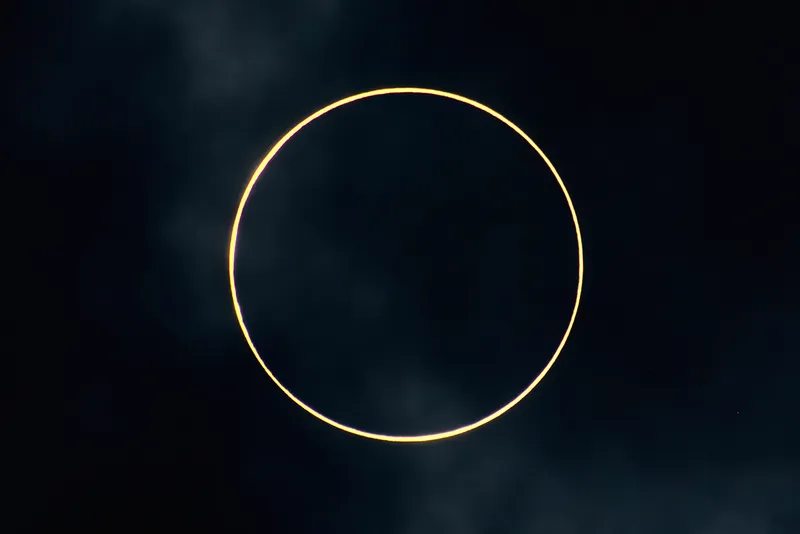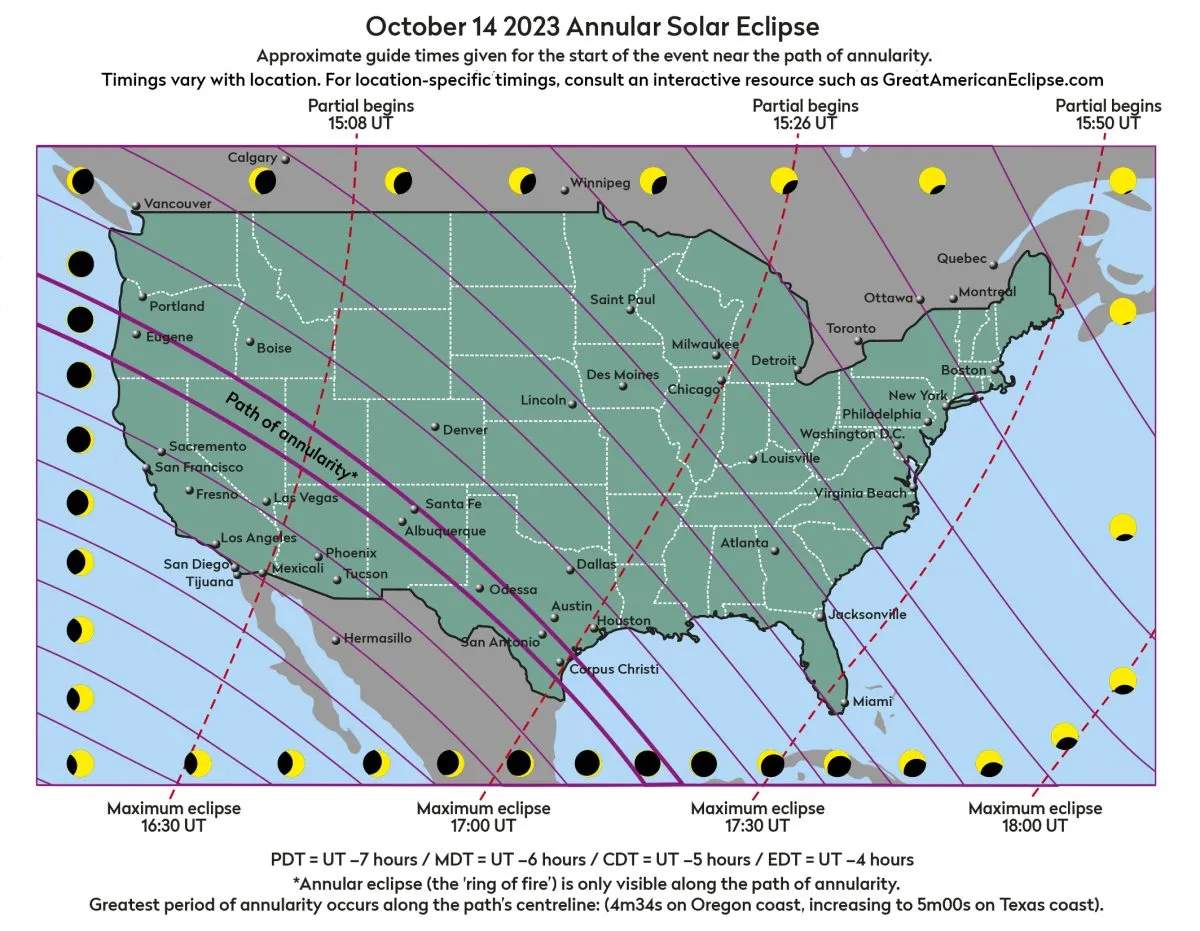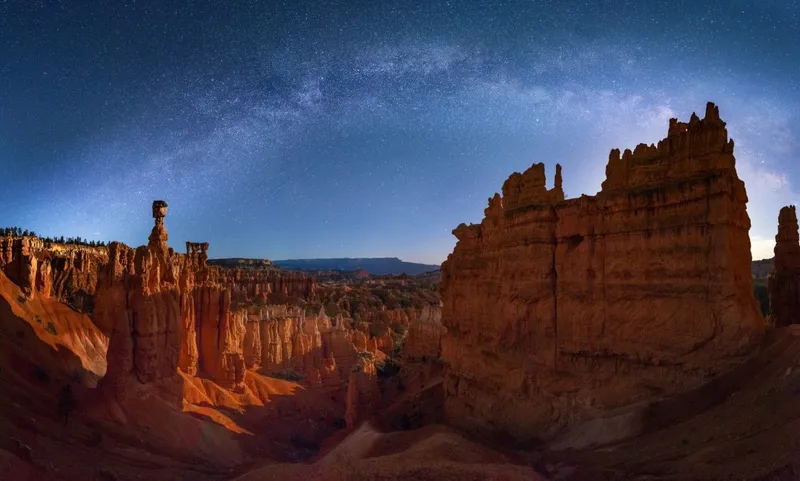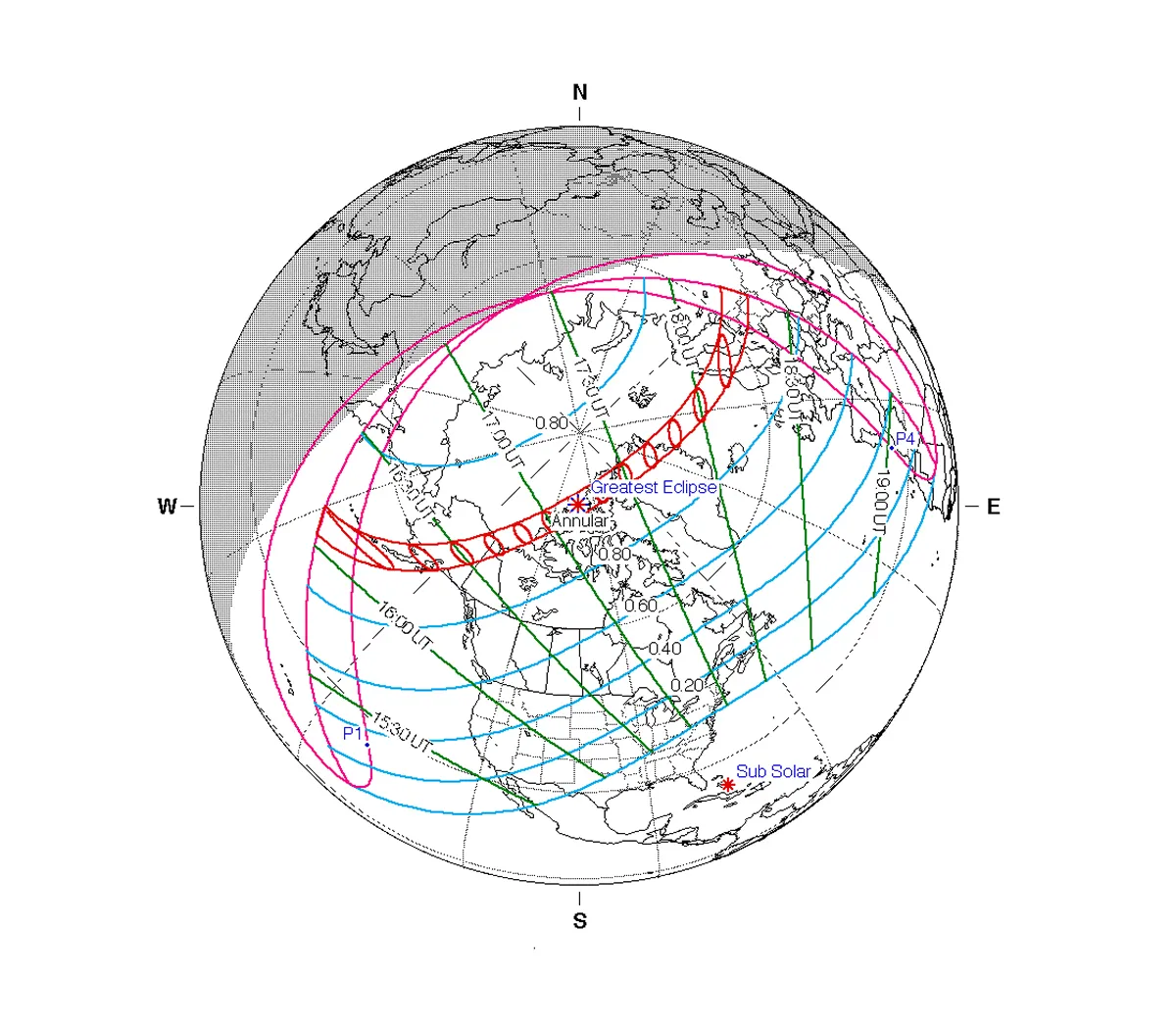Observers and eclipse-chasers across North America and South America are gearing up for this weekend's solar eclipse.
On October 14 the Moon will pass in front of the Sun, causing a solar eclipse that's one of the highlights of the 2023 American astronomy calendar.
For timings, where and when to see it and how to observe it safely, read our complete guide to the October 14 solar eclipse.
Here are 8 facts about this weekend's solar eclipse that you may not already know.
Facts about the October 14 solar eclipse
It's an annular eclipse, not a total eclipse

During a total solar eclipse, the Moon's silhouette blocks out the entire disc of the Sun for a brief moment, causing daytime to be plunged into darkness.
That's not what's happening on October 14, however. This will be an annular solar eclipse, which means the Moon won't completely cover the solar disc.
Instead, a 'ring of fire' will be visible as the Moon passes front of the Sun.
Learn more about why this is happening in our guide to annular solar eclipses.
It'll be seen in 10 countries

The October 14 eclipse will have a narrow path of annularity - where the full ring of fire can be seen - while others will see a partial solar eclipse.
Nevertheless, the eclipse - be it full or partial - will be seen across all of North America and much of South America.
The October 14 eclipse will pass through:
- USA
- Mexico
- Belize
- Guatemala
- Honduras
- Nicaragua
- Costa Rica
- Panama
- Colombia
- Brazil
Only some regions will see the full ring of fire eclipse

The October 14 eclipse has a path of annularity that reaches about 140 miles at its widest and starts south of Alaska (see map above).
This path of annularity shows those locations where the full annular eclipse will be visible.
Outside of these areas, a partial solar eclipse will be visible instead.
If you're observing from the US, you can use the above map to work out what you'll see and when from your location.
For the full map and more, download our October eclipse map.
The annular eclipse will last up to 5 minutes

The maximum duration of the ‘ring of fire’ will be just off the coast of Nicaragua in the Gulf of Mexico.
The only major cities that will see the full eclipse will be Albuquerque, New Mexico (4 min 42 sec from 10:34 am local time) and San Antonio, Texas (4 min 5 sec from 11:52 am local time).
There are a few National Parks in the US that will see the full annular eclipse.
These are Bryce Canyon, Utah (2 min 18 sec from 10:27 am local time); Canyonlands, Utah (2 min 21 sec from 10:29 am local time); Mesa Verde, Colorado (2 min 56 sec from 10:31 am local time).
Recently Monument Valley in Arizona and the Four Corners announced they would be closing for the duration of the October eclipse.
It'll be the last annular eclipse visible in the US until June 21, 2039

An annular solar eclipse will occur on June 21, 2039 and the full annular eclipse will be visible from Belarus, Canada, Estonia, Finland, Greenland, Latvia, Lithuania, Norway, Russia, Sweden and the United States, according to timeanddate.com.
For the US, this will be the next annular solar eclipse visible after the October 14 2023 event.
However, in the US the full annular eclipse will only be visible from Alaska.
Eclipse parties are being held across the US

As you would expect, there are multiple parties and public events being held to celebrate the October 14 eclipse.
Nationaleclipse.com has a list of some of the parties taking place in the US.
NASA is hosting an eclipse party at the Pierce Cedar Creek Institute in Michigan.
There's also a ring of fire event being held at the famous Lowell Observatory in Arizona.
You can watch the eclipse live online
Not going to be in North America or South America for the October eclipse?
Fear not, you can watch the October 14 eclipse online!
Timeanddate.com is hosting a livestream on YouTube, which you can see below.
And NASA is broadcasting the October eclipse via NASA TV.
Watch a live telescopic view of the October solar eclipse via San Francisco science museum Exploratorium's livestream.
It's a warm-up to the April 8 eclipse

Our final fact is more of a look-ahead to next year, when a total solar eclipse will be visible in the US.
The April 8 2024 solar eclipse is being seen by some as the better of the two upcoming US eclipses, with the October 14 annular eclipse being something of a warm-up for the main act.
Don't let that put you off observing the incredible annular solar eclipse this weekend, though.
Both events are set to be wonderful spectacles, well worth observing (find out more about how to safely view a solar eclipse).
Yes, it seems that for the next 6 months, it's a good time to be an eclipse-chaser in North America.
Are you observing the October 14 or the April 8 eclipse? Let us know by emailing contactus@skyatnightmagazine.com
